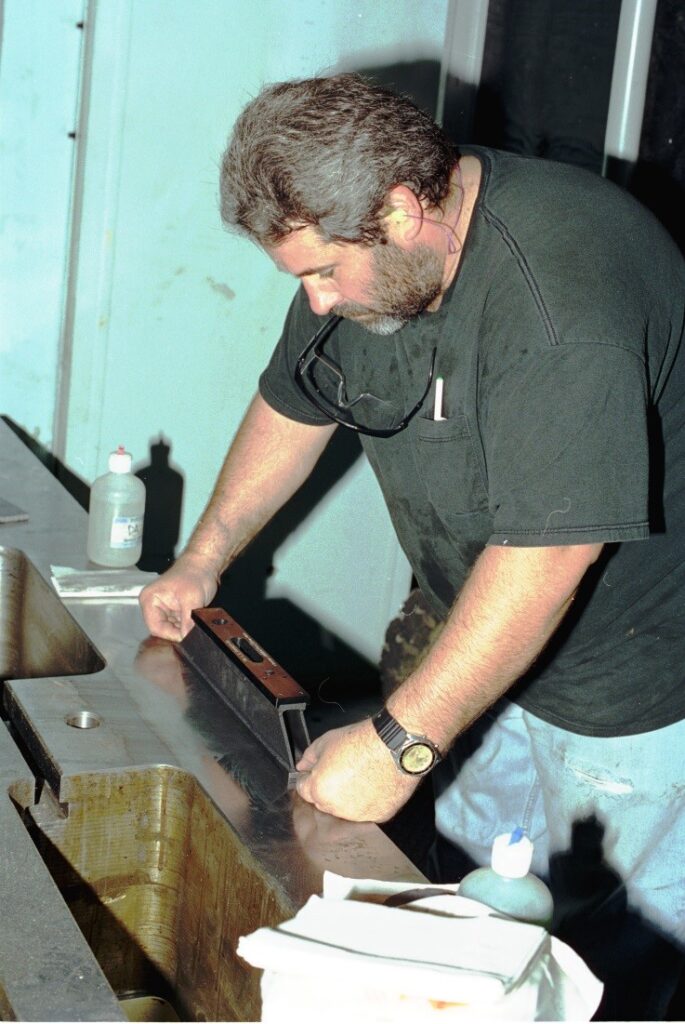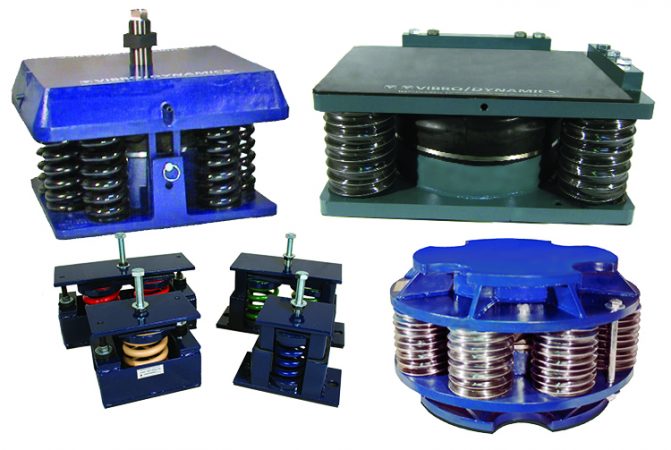
Annual Preventative Maintenance Checklist for Press Installations
03/11/2020
Check the level of your press. The level condition of the press should be checked annually because the floor/foundation supporting a press can shift and settle under the weight of the press. Changes in the operation or plant layout can also affect the settling of the foundation and require releveling of the press. If the press is installed on Vibro/Dynamics isolators, the releveling process is very fast, easy, and precise. For thorough information on the leveling process, contact Vibro/Dynamics to request a copy of the technical bulletin, M/L 647 – How to Level a Press Using a Precision Machinist’s Level.
Clean debris from around the isolators. When slugs and other debris build up around the isolators, it’s possible for a solid connection to form between the isolator housing and the floor or pit wall, which could in effect “short-circuit” the isolators and reduce their performance.
Check the isolator locknuts. The locknuts threaded on the isolator leveling screws should be securely fastened to the machine feet. If you need to adjust them, use a wrench to hold the head of the leveling screw while tightening the locknut.
Check for any solid connections between the press and the foundation or building structure. Flexible connections are recommended for all plumbing and electrical conduit. Floor plates, walkways, railings, feeds, rolling bolster rails, etc…should not be attached to both the machine and the floor, foundation, or building structure. Hard connections will reduce isolation effectiveness.
Inspect the machine feet and legs. Repair any cracks or damage.
Check the condition of the isolator resilient members. Bulging of the resilient members is normal and it’s okay if they’re dirty. A problem may exist if there are rips, tears, or signs of the resilient member deteriorating. If you are concerned about their condition, send us a photo and we’ll analyze the situation. If there are any problems, individual isolator components can be replaced. Vibro/Dynamics also offers a reconditioning service for isolators, which brings the isolators into a like-new condition for less money than if you were to purchase new ones.
To view all of Vibro/Dynamics’ installation instructions, please visit our documents page.
Read more

